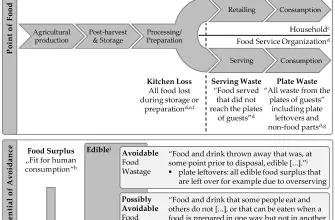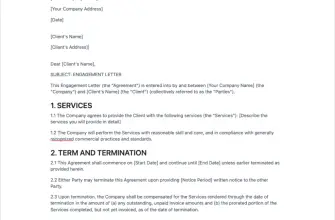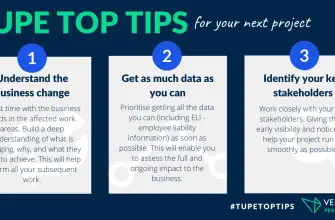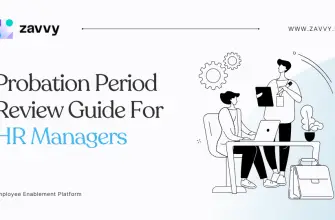Crafting an Effective Person Specification: Essential Tips and Strategies for Employers to Hire the Best Talent – Your Guide to Successful Recruitment.
Crafting an effective person specification is crucial for employers to attract and hire the best talent for their organization. A person specification outlines the skills, qualifications, and personal attributes required for a particular job role. It helps employers to identify the most suitable candidates and ensures that the recruitment process is fair and transparent. In this article, we will discuss some essential tips and strategies for employers to create an effective person specification that will help them to hire the best talent.
Why a Person Specification is Crucial for Hiring Success
Crafting an Effective Person Specification: Essential Tips and Strategies for Employers to Hire the Best Talent
Hiring the right talent is crucial for the success of any organization. However, finding the right candidate can be a daunting task, especially when there are numerous applicants for a single position. This is where a person specification comes in handy. A person specification is a document that outlines the skills, knowledge, and experience required for a particular job. It is an essential tool for employers to ensure that they hire the best talent for their organization.
A person specification is crucial for hiring success because it helps employers to identify the key competencies required for a particular job. It provides a clear and concise description of the skills, knowledge, and experience that a candidate must possess to be considered for the position. This helps employers to focus their recruitment efforts on candidates who meet the required criteria, thereby increasing the chances of finding the right candidate.
In addition, a person specification helps to ensure that the recruitment process is fair and transparent. By outlining the required competencies, employers can ensure that all candidates are assessed on the same criteria. This helps to eliminate any bias or discrimination in the recruitment process, ensuring that the best candidate is selected based on their skills and experience.
When crafting a person specification, there are several essential tips and strategies that employers should consider. Firstly, it is important to involve key stakeholders in the process. This includes managers, team leaders, and other relevant staff members who have a good understanding of the job requirements. By involving these stakeholders, employers can ensure that the person specification accurately reflects the needs of the organization.
Secondly, it is important to be specific when outlining the required competencies. This means providing clear and concise descriptions of the skills, knowledge, and experience required for the job. For example, instead of simply stating that the candidate must have good communication skills, it is better to specify the type of communication skills required, such as the ability to communicate effectively with clients or colleagues.
Thirdly, it is important to prioritize the competencies required for the job. This means identifying the most important competencies and listing them first. This helps to ensure that candidates who possess these competencies are given priority during the recruitment process.
Finally, it is important to review and update the person specification regularly. This ensures that it remains relevant and up-to-date with the changing needs of the organization. It also helps to ensure that the recruitment process remains fair and transparent.
In conclusion, a person specification is a crucial tool for employers to hire the best talent for their organization. It helps to identify the key competencies required for a particular job, ensures that the recruitment process is fair and transparent, and increases the chances of finding the right candidate. When crafting a person specification, it is important to involve key stakeholders, be specific when outlining the required competencies, prioritize the competencies required for the job, and review and update the person specification regularly. By following these essential tips and strategies, employers can ensure that they hire the best talent for their organization.
Key Components of a Comprehensive Person Specification
Crafting an Effective Person Specification: Essential Tips and Strategies for Employers to Hire the Best Talent
When it comes to hiring the best talent for your organization, crafting an effective person specification is crucial. A person specification is a document that outlines the skills, knowledge, and experience required for a particular job role. It is an essential tool for employers to attract and select the right candidates for the job.
A comprehensive person specification should include several key components. These components are essential to ensure that the document is clear, concise, and effective in attracting the right candidates. In this article, we will discuss the key components of a comprehensive person specification and provide tips and strategies for employers to create an effective document.
Job Title and Purpose
The first component of a person specification is the job title and purpose. This section should clearly state the job title and provide a brief overview of the purpose of the role. This information is essential for candidates to understand the nature of the job and determine if they have the necessary skills and experience to apply.
Essential Criteria
The next component of a person specification is the essential criteria. This section should outline the essential skills, knowledge, and experience required for the job. Employers should be specific and provide clear examples of the type of experience and qualifications required. This information will help candidates determine if they are a good fit for the role and will also help employers to shortlist candidates effectively.
Desirable Criteria
The third component of a person specification is the desirable criteria. This section should outline the skills, knowledge, and experience that would be beneficial for the job but are not essential. Employers should be clear about the level of importance of these criteria and how they will be used in the selection process.
Qualifications and Experience
The fourth component of a person specification is qualifications and experience. This section should outline the minimum qualifications required for the job and the level of experience required. Employers should be specific about the type of qualifications and experience required and provide clear examples of the type of experience that would be beneficial.
Skills and Competencies
The fifth component of a person specification is skills and competencies. This section should outline the specific skills and competencies required for the job. Employers should be specific about the level of proficiency required for each skill and competency and provide clear examples of how these skills and competencies will be used in the job.
Personal Qualities
The final component of a person specification is personal qualities. This section should outline the personal qualities required for the job. Employers should be specific about the type of personal qualities required and provide clear examples of how these qualities will be used in the job.
Tips and Strategies for Employers
To create an effective person specification, employers should follow these tips and strategies:
1. Be specific: Employers should be specific about the skills, knowledge, and experience required for the job. This will help to attract the right candidates and ensure that the selection process is effective.
2. Use clear language: Employers should use clear and concise language in the person specification. This will help candidates to understand the requirements of the job and determine if they are a good fit.
3. Provide examples: Employers should provide clear examples of the type of experience and qualifications required for the job. This will help candidates to understand the level of experience required and determine if they are a good fit.
4. Be realistic: Employers should be realistic about the requirements of the job. This will help to attract the right candidates and ensure that the selection process is effective.
5. Review and update regularly: Employers should review and update the person specification regularly to ensure that it remains relevant and effective.
Conclusion
Crafting an effective person specification is essential for employers to attract and select the right candidates for the job. A comprehensive person specification should include several key components, including the job title and purpose, essential criteria, desirable criteria, qualifications and experience, skills and competencies, and personal qualities. Employers should be specific, use clear language, provide examples, be realistic, and review and update regularly to create an effective person specification. By following these tips and strategies, employers can hire the best talent for their organization.
How to Write a Clear and Concise Person Specification
Crafting an Effective Person Specification: Essential Tips and Strategies for Employers to Hire the Best Talent
When it comes to hiring the best talent for your organization, crafting an effective person specification is crucial. A person specification is a document that outlines the skills, knowledge, and experience required for a particular job role. It is an essential tool for employers to attract and select the right candidates for the job.
Writing a clear and concise person specification can be challenging, but it is essential to ensure that you attract the right candidates for the job. Here are some essential tips and strategies for employers to write an effective person specification.
1. Start with the Job Description
The first step in writing a person specification is to start with the job description. The job description should outline the key responsibilities and duties of the job role. It should also include the required qualifications, skills, and experience needed for the job.
The person specification should build on the job description and provide more detail on the specific skills and experience required for the job. It should also include any additional requirements, such as personality traits or specific qualifications.
2. Use Clear and Concise Language
When writing a person specification, it is essential to use clear and concise language. Avoid using jargon or technical terms that may be unfamiliar to candidates. Use simple language that is easy to understand and avoid using long sentences or paragraphs.
3. Be Specific
When writing a person specification, it is essential to be specific about the skills and experience required for the job. Avoid using vague terms such as “good communication skills” or “team player.” Instead, be specific about the type of communication skills required, such as “excellent written and verbal communication skills” or “ability to work collaboratively in a team environment.”
4. Prioritize Essential Criteria
When writing a person specification, it is essential to prioritize the essential criteria. Identify the key skills and experience required for the job and prioritize them in order of importance. This will help you to focus on the most critical criteria when selecting candidates for the job.
5. Use Competency-Based Criteria
Competency-based criteria are a useful tool for assessing candidates’ skills and experience. Competency-based criteria focus on the specific skills and behaviors required for the job. They are based on the premise that past behavior is the best predictor of future behavior.
When using competency-based criteria, it is essential to be specific about the behaviors required for the job. For example, instead of using the term “problem-solving skills,” use a competency-based criterion such as “ability to analyze complex problems and develop effective solutions.”
6. Include Diversity and Inclusion Criteria
Diversity and inclusion are essential considerations when writing a person specification. Including diversity and inclusion criteria in the person specification can help to attract a more diverse range of candidates.
Diversity and inclusion criteria can include factors such as language skills, cultural awareness, and experience working with diverse communities. Including these criteria in the person specification can help to ensure that your organization is attracting a diverse range of candidates.
In conclusion, writing a clear and concise person specification is essential for employers to attract and select the right candidates for the job. By starting with the job description, using clear and concise language, being specific, prioritizing essential criteria, using competency-based criteria, and including diversity and inclusion criteria, employers can write an effective person specification that will help them to hire the best talent for their organization.
Using Person Specification Examples to Guide Your Hiring Process
Crafting an Effective Person Specification: Essential Tips and Strategies for Employers to Hire the Best Talent
Hiring the right talent is crucial for any organization’s success. However, finding the right candidate can be a daunting task, especially when you have to sift through hundreds of resumes and cover letters. To make the hiring process more efficient and effective, employers need to create a person specification that outlines the skills, experience, and qualities required for the job. In this article, we will discuss essential tips and strategies for crafting an effective person specification and using person specification examples to guide your hiring process.
What is a Person Specification?
A person specification is a document that outlines the skills, experience, and qualities required for a particular job. It is a detailed description of the ideal candidate for the job, and it helps employers to identify the right talent for the role. A person specification should be based on the job description and should include essential criteria, desirable criteria, and any other relevant information that will help employers to assess candidates’ suitability for the job.
Essential Tips for Crafting an Effective Person Specification
1. Start with the Job Description
The person specification should be based on the job description. It should outline the skills, experience, and qualities required for the job. Employers should review the job description carefully and identify the essential and desirable criteria for the role.
2. Be Specific
Employers should be specific when outlining the essential and desirable criteria for the job. For example, instead of stating that the candidate should have good communication skills, employers should specify the type of communication skills required, such as excellent written and verbal communication skills.
3. Use Action Verbs
Employers should use action verbs when outlining the essential and desirable criteria for the job. Action verbs make the person specification more concise and specific. For example, instead of stating that the candidate should have experience in project management, employers should use action verbs such as “managed projects” or “led project teams.”
4. Prioritize the Criteria
Employers should prioritize the essential and desirable criteria for the job. This will help them to assess candidates’ suitability for the role more effectively. Employers should also consider the weight of each criterion when making hiring decisions.
5. Be Inclusive
Employers should ensure that the person specification is inclusive and does not discriminate against any group of candidates. The person specification should be based on the skills, experience, and qualities required for the job, and not on any personal characteristics such as age, gender, or ethnicity.
Using Person Specification Examples to Guide Your Hiring Process
Employers can use person specification examples to guide their hiring process. Person specification examples provide a template for creating an effective person specification and can help employers to identify the essential and desirable criteria for the job. Employers can also use person specification examples to benchmark their person specification against industry standards.
Here are some person specification examples that employers can use to guide their hiring process:
1. Marketing Manager Person Specification
Essential Criteria:
– Bachelor’s degree in marketing or a related field
– Minimum of 5 years of experience in marketing
– Excellent written and verbal communication skills
– Strong project management skills
– Experience in digital marketing
– Ability to work under pressure and meet deadlines
Desirable Criteria:
– Master’s degree in marketing or a related field
– Experience in event management
– Experience in market research
– Experience in social media marketing
2. Software Developer Person Specification
Essential Criteria:
– Bachelor’s degree in computer science or a related field
– Minimum of 3 years of experience in software development
– Proficient in programming languages such as Java, Python, and C++
– Experience in software design and architecture
– Strong problem-solving skills
– Ability to work in a team environment
Desirable Criteria:
– Master’s degree in computer science or a related field
– Experience in mobile app development
– Experience in cloud computing
– Experience in machine learning
Conclusion
Crafting an effective person specification is essential for employers to hire the best talent for their organization. Employers should start with the job description, be specific, use action verbs, prioritize the criteria, and be inclusive when creating a person specification. Employers can also use person specification examples to guide their hiring process and benchmark their person specification against industry standards. By following these essential tips and strategies, employers can create an effective person specification that will help them to identify the right talent for the job.
The Importance of Tailoring Your Person Specification to the Role

Crafting an Effective Person Specification: Essential Tips and Strategies for Employers to Hire the Best Talent
When it comes to hiring the best talent for your organization, crafting an effective person specification is crucial. A person specification is a document that outlines the skills, knowledge, and experience required for a particular role. It is an essential tool for employers to attract and select the right candidates for the job.
One of the most important aspects of creating a person specification is tailoring it to the specific role. This means taking into account the unique requirements of the job and the organization. A generic person specification that is not tailored to the role will not attract the right candidates and may result in a poor hire.
To tailor your person specification to the role, start by analyzing the job description. Look at the key responsibilities and requirements of the role and identify the skills, knowledge, and experience that are essential for success. This will help you to create a list of criteria that you can use to evaluate candidates.
It is also important to consider the culture and values of your organization when creating a person specification. Think about the type of person who would fit in well with your team and contribute to the success of the organization. This may include qualities such as teamwork, adaptability, and a positive attitude.
When creating your person specification, be specific and avoid vague language. Use clear and concise language to describe the skills, knowledge, and experience required for the role. This will help to attract candidates who have the right qualifications and experience for the job.
Another important aspect of tailoring your person specification to the role is to consider the level of experience required. For example, if you are hiring for an entry-level position, you may be looking for candidates who have recently graduated from college or have limited work experience. On the other hand, if you are hiring for a senior-level position, you may be looking for candidates with extensive experience and a proven track record of success.
It is also important to consider any specific qualifications or certifications that are required for the role. For example, if you are hiring for a position in healthcare, you may require candidates to have a specific degree or certification. Make sure to include these requirements in your person specification to ensure that you attract candidates who meet the necessary qualifications.
When creating your person specification, it is important to be realistic about the requirements of the role. Avoid setting unrealistic expectations that may deter qualified candidates from applying. Instead, focus on the essential skills, knowledge, and experience required for the role.
In conclusion, tailoring your person specification to the role is essential for attracting and selecting the right candidates for your organization. By analyzing the job description, considering the culture and values of your organization, and being specific about the requirements of the role, you can create an effective person specification that will help you to hire the best talent. Remember to be realistic about the requirements of the role and avoid setting unrealistic expectations. With these tips and strategies, you can create a person specification that will help you to build a strong and successful team.
Avoiding Bias in Your Person Specification: Tips for Inclusive Hiring
Crafting an Effective Person Specification: Essential Tips and Strategies for Employers to Hire the Best Talent
As an employer, hiring the best talent is crucial to the success of your business. One of the most important steps in the hiring process is crafting an effective person specification. A person specification is a document that outlines the skills, experience, and qualities that a candidate must possess to be considered for a particular role. It is essential to ensure that your person specification is inclusive and avoids any bias that may prevent you from hiring the best talent.
Avoiding Bias in Your Person Specification: Tips for Inclusive Hiring
1. Use Gender-Neutral Language
Using gender-neutral language in your person specification is essential to avoid any bias towards a particular gender. Avoid using words like “he” or “she” and instead use gender-neutral terms like “they” or “the candidate.” This will ensure that your person specification is inclusive and does not discriminate against any gender.
2. Focus on Skills and Experience
When crafting your person specification, focus on the skills and experience required for the role. Avoid including any personal characteristics that are not relevant to the job. This will ensure that your person specification is objective and does not discriminate against any particular group.
3. Avoid Stereotypes
Avoid using stereotypes in your person specification. For example, avoid using phrases like “must be a team player” or “must be able to multitask.” These phrases can be seen as gendered and may discourage candidates who do not fit into these stereotypes from applying for the role.
4. Use Inclusive Language
Using inclusive language in your person specification is essential to ensure that all candidates feel welcome to apply for the role. For example, instead of using phrases like “must have a degree,” use phrases like “equivalent experience or qualifications will be considered.” This will ensure that candidates who may not have a degree but have relevant experience are not excluded from the hiring process.
5. Consider Diversity and Inclusion
When crafting your person specification, consider diversity and inclusion. Ensure that your person specification is inclusive of all candidates, regardless of their race, gender, age, or background. This will ensure that you attract a diverse pool of candidates and hire the best talent for the role.
6. Review and Revise
Review and revise your person specification regularly to ensure that it remains inclusive and up-to-date. Consider feedback from candidates and employees to ensure that your person specification is fair and unbiased.
In conclusion, crafting an effective person specification is essential to hiring the best talent for your business. It is crucial to ensure that your person specification is inclusive and avoids any bias that may prevent you from hiring the best talent. By using gender-neutral language, focusing on skills and experience, avoiding stereotypes, using inclusive language, considering diversity and inclusion, and reviewing and revising regularly, you can create an effective person specification that attracts a diverse pool of candidates and hires the best talent for the role.
Maximizing the Effectiveness of Your Person Specification with SMART Criteria
Crafting an Effective Person Specification: Essential Tips and Strategies for Employers to Hire the Best Talent
When it comes to hiring the best talent for your organization, crafting an effective person specification is crucial. A person specification is a document that outlines the skills, knowledge, and experience required for a particular job role. It is an essential tool for employers to attract and select the right candidates for the job.
To maximize the effectiveness of your person specification, it is important to use SMART criteria. SMART stands for Specific, Measurable, Achievable, Relevant, and Time-bound. In this article, we will discuss how to use SMART criteria to create an effective person specification.
Specific
The first step in creating an effective person specification is to be specific about the skills, knowledge, and experience required for the job role. This means that you need to clearly define the job role and the responsibilities that come with it. You should also be specific about the qualifications and experience required for the job.
For example, if you are hiring a software developer, you should be specific about the programming languages and tools that the candidate should be proficient in. You should also be specific about the level of experience required, such as the number of years of experience in software development.
Measurable
The next step is to make your person specification measurable. This means that you need to define the criteria for measuring the candidate’s skills, knowledge, and experience. You should also define the criteria for measuring the candidate’s performance on the job.
For example, if you are hiring a sales representative, you should define the criteria for measuring the candidate’s sales performance, such as the number of sales made per month or the revenue generated from sales.
Achievable
The third step is to ensure that your person specification is achievable. This means that you need to define the skills, knowledge, and experience required for the job role in a way that is realistic and achievable for the candidate.
For example, if you are hiring a marketing manager, you should define the skills and experience required in a way that is achievable for the candidate. You should also consider the candidate’s current level of experience and qualifications when defining the requirements for the job.
Relevant
The fourth step is to ensure that your person specification is relevant to the job role. This means that you need to define the skills, knowledge, and experience required in a way that is relevant to the job role and the organization’s goals.
For example, if you are hiring a project manager, you should define the skills and experience required in a way that is relevant to the project management role and the organization’s goals. You should also consider the specific requirements of the project when defining the requirements for the job.
Time-bound
The final step is to make your person specification time-bound. This means that you need to define the timeframe for hiring the candidate and the timeframe for achieving the goals of the job role.
For example, if you are hiring a customer service representative, you should define the timeframe for hiring the candidate and the timeframe for achieving the goals of the customer service role, such as the average response time to customer inquiries.
In conclusion, using SMART criteria is essential for creating an effective person specification. By being specific, measurable, achievable, relevant, and time-bound, you can attract and select the right candidates for the job. This will help you to hire the best talent for your organization and achieve your business goals.
Collaborating with Hiring Managers to Create an Effective Person Specification
Crafting an Effective Person Specification: Essential Tips and Strategies for Employers to Hire the Best Talent
As an employer, hiring the best talent is crucial to the success of your business. However, finding the right candidate can be a daunting task. One of the most important steps in the hiring process is creating an effective person specification. A person specification is a document that outlines the skills, experience, and qualities required for a particular job. It is used to attract the right candidates and to ensure that the selection process is fair and objective. In this article, we will discuss essential tips and strategies for collaborating with hiring managers to create an effective person specification.
The first step in creating an effective person specification is to collaborate with the hiring manager. The hiring manager is the person who will be responsible for managing the new employee, so it is important to involve them in the process. The hiring manager can provide valuable insights into the skills and qualities required for the job. They can also help to identify any potential challenges or issues that may arise during the recruitment process.
Once you have identified the hiring manager, the next step is to conduct a job analysis. A job analysis is a process of gathering information about the job, including the tasks, responsibilities, and required skills. This information can be gathered through interviews with current employees, observation of the job, and review of job descriptions and performance evaluations. The job analysis will help to identify the essential and desirable skills and qualities required for the job.
After conducting the job analysis, the next step is to create a person specification. The person specification should be based on the essential and desirable skills and qualities identified in the job analysis. The person specification should be clear, concise, and easy to understand. It should also be specific to the job and avoid using generic terms that could apply to any job.
When creating the person specification, it is important to use language that is inclusive and avoids discrimination. This means avoiding language that could be interpreted as discriminatory, such as age, gender, race, or religion. Instead, focus on the skills and qualities required for the job.
Another important aspect of creating an effective person specification is to ensure that it is measurable. This means that the skills and qualities identified in the person specification should be measurable and observable. This will help to ensure that the selection process is fair and objective.
Finally, it is important to review and update the person specification regularly. Jobs and industries are constantly evolving, and the skills and qualities required for a particular job may change over time. Regularly reviewing and updating the person specification will help to ensure that it remains relevant and effective.
In conclusion, creating an effective person specification is essential for hiring the best talent. By collaborating with the hiring manager, conducting a job analysis, creating a clear and concise person specification, using inclusive language, ensuring that it is measurable, and regularly reviewing and updating it, employers can attract the right candidates and ensure that the selection process is fair and objective.
The Role of Person Specification in Streamlining Your Recruitment Process
Crafting an Effective Person Specification: Essential Tips and Strategies for Employers to Hire the Best Talent
As an employer, hiring the best talent for your organization is crucial for its success. However, finding the right candidate can be a daunting task, especially when you have to sift through a large pool of applicants. This is where a person specification comes in handy. A person specification is a document that outlines the skills, knowledge, and experience required for a particular job role. It helps you to streamline your recruitment process and attract the best candidates for the job.
The Role of Person Specification in Streamlining Your Recruitment Process
A person specification is an essential tool in the recruitment process. It helps you to identify the key competencies required for a particular job role and ensures that you hire the right person for the job. By outlining the skills, knowledge, and experience required for the job, you can attract the best candidates and avoid wasting time and resources on unsuitable applicants.
When crafting a person specification, it is important to be clear and concise. Use simple language and avoid jargon that may be difficult for candidates to understand. Be specific about the skills and experience required for the job and provide examples of how these skills will be used in the role.
It is also important to consider the company culture when crafting a person specification. The person specification should reflect the values and ethos of the organization. This will help to attract candidates who share the same values and are a good fit for the company culture.
Another important aspect of a person specification is to ensure that it is non-discriminatory. Avoid using language that may be discriminatory or exclude certain groups of people. For example, avoid using gender-specific language or age limits unless they are essential for the job role.
When crafting a person specification, it is important to involve key stakeholders in the process. This may include managers, HR professionals, and employees who are familiar with the job role. This will help to ensure that the person specification accurately reflects the requirements of the job and the needs of the organization.
In addition to outlining the skills, knowledge, and experience required for the job, a person specification may also include other criteria such as qualifications, personal qualities, and specific competencies. For example, if the job requires working with children, the person specification may include a requirement for a DBS check.
When advertising the job, it is important to include the person specification in the job description. This will help to attract the right candidates and ensure that they are aware of the requirements of the job before applying.
In conclusion, a person specification is an essential tool in the recruitment process. It helps to streamline the process and attract the best candidates for the job. When crafting a person specification, it is important to be clear and concise, consider the company culture, ensure that it is non-discriminatory, involve key stakeholders, and include other criteria such as qualifications and personal qualities. By following these tips and strategies, you can craft an effective person specification and hire the best talent for your organization.
Measuring the Success of Your Person Specification: Metrics to Track and Analyze
Crafting an Effective Person Specification: Essential Tips and Strategies for Employers to Hire the Best Talent
Hiring the right talent is crucial for the success of any organization. However, finding the right candidate can be a daunting task, especially when there are numerous applicants for a single position. To make the hiring process more efficient, employers need to create an effective person specification that outlines the skills, experience, and qualities required for the job. In this article, we will discuss essential tips and strategies for crafting an effective person specification and measuring its success.
Essential Tips and Strategies for Crafting an Effective Person Specification
1. Define the Job Role Clearly
The first step in creating an effective person specification is to define the job role clearly. This includes outlining the responsibilities, duties, and tasks that the candidate will be expected to perform. It is essential to be specific and avoid vague language that can lead to confusion. This will help attract the right candidates and ensure that they understand what is expected of them.
2. Identify the Essential Skills and Qualifications
Once the job role is defined, the next step is to identify the essential skills and qualifications required for the job. This includes technical skills, experience, and educational qualifications. It is important to prioritize the skills and qualifications based on their importance for the job role. This will help filter out candidates who do not meet the minimum requirements.
3. Define the Personal Qualities and Attributes
Apart from technical skills and qualifications, personal qualities and attributes are also important for the job role. This includes communication skills, teamwork, problem-solving, and adaptability. It is important to define these qualities clearly and prioritize them based on their importance for the job role.
4. Use Clear and Concise Language
When creating a person specification, it is important to use clear and concise language. Avoid using jargon or technical terms that may not be understood by all candidates. Use simple language that is easy to understand and avoid using ambiguous or vague terms.
5. Review and Refine the Person Specification
Once the person specification is created, it is important to review and refine it. This includes checking for errors, ensuring that the language is clear and concise, and making sure that the essential skills and qualifications are prioritized correctly. It is also important to ensure that the personal qualities and attributes are defined clearly and prioritized based on their importance for the job role.
Measuring the Success of Your Person Specification: Metrics to Track and Analyze
Creating an effective person specification is only the first step in the hiring process. To measure the success of the person specification, employers need to track and analyze certain metrics. Here are some metrics that can be used to measure the success of a person specification:
1. Number of Applicants
The number of applicants is an important metric to track as it indicates the level of interest in the job role. If the number of applicants is low, it may indicate that the person specification is not attracting the right candidates. On the other hand, if the number of applicants is high, it may indicate that the person specification is effective in attracting the right candidates.
2. Quality of Applicants
Apart from the number of applicants, the quality of applicants is also important to track. This includes the number of applicants who meet the essential skills and qualifications, as well as the personal qualities and attributes defined in the person specification. If the quality of applicants is low, it may indicate that the person specification needs to be refined.
3. Time to Hire
The time to hire is another important metric to track. This includes the time taken to fill the position from the date of posting the job advertisement. If the time to hire is high, it may indicate that the person specification is not attracting the right candidates or that the hiring process needs to be streamlined.
4. Retention Rate
The retention rate is a metric that measures the percentage of employees who stay with the organization for a certain period. If the retention rate is high, it may indicate that the person specification is effective in hiring the right candidates who are a good fit for the organization.
In conclusion, creating an effective person specification is essential for hiring the right talent. By defining the job role clearly, identifying the essential skills and qualifications, defining the personal qualities and attributes, using clear and concise language, and reviewing and refining the person specification, employers can attract the right candidates. To measure the success of the person specification, employers need to track and analyze metrics such as the number of applicants, quality of applicants, time to hire, and retention rate. By using these metrics, employers can refine their person specification and improve their hiring process.
Q&A
1. What is a person specification?
A person specification is a document that outlines the skills, knowledge, experience, and personal qualities required for a particular job role.
2. Why is a person specification important?
A person specification is important because it helps employers to identify the most suitable candidates for a job role and ensures that the recruitment process is fair and transparent.
3. What should be included in a person specification?
A person specification should include the essential and desirable criteria for the job role, such as qualifications, experience, skills, and personal qualities.
4. How can employers ensure that their person specification is effective?
Employers can ensure that their person specification is effective by conducting a thorough job analysis, consulting with relevant stakeholders, and using clear and concise language.
5. What are some common mistakes to avoid when creating a person specification?
Common mistakes to avoid when creating a person specification include using discriminatory language, including irrelevant criteria, and failing to consult with relevant stakeholders.
6. How can employers use a person specification in the recruitment process?
Employers can use a person specification in the recruitment process by using it to shortlist candidates, design interview questions, and assess candidates against the essential and desirable criteria.
7. How can employers ensure that their person specification is inclusive?
Employers can ensure that their person specification is inclusive by using inclusive language, avoiding stereotypes, and considering the needs of diverse candidates.
8. What are some strategies for attracting a diverse range of candidates?
Strategies for attracting a diverse range of candidates include using inclusive language in job adverts, advertising in a range of media, and offering flexible working arrangements.
9. How can employers evaluate the effectiveness of their person specification?
Employers can evaluate the effectiveness of their person specification by monitoring the diversity of their applicant pool, assessing the quality of candidates, and seeking feedback from stakeholders.
10. How can employers use feedback to improve their person specification?
Employers can use feedback to improve their person specification by identifying areas for improvement, making changes to the criteria, and consulting with relevant stakeholders.








